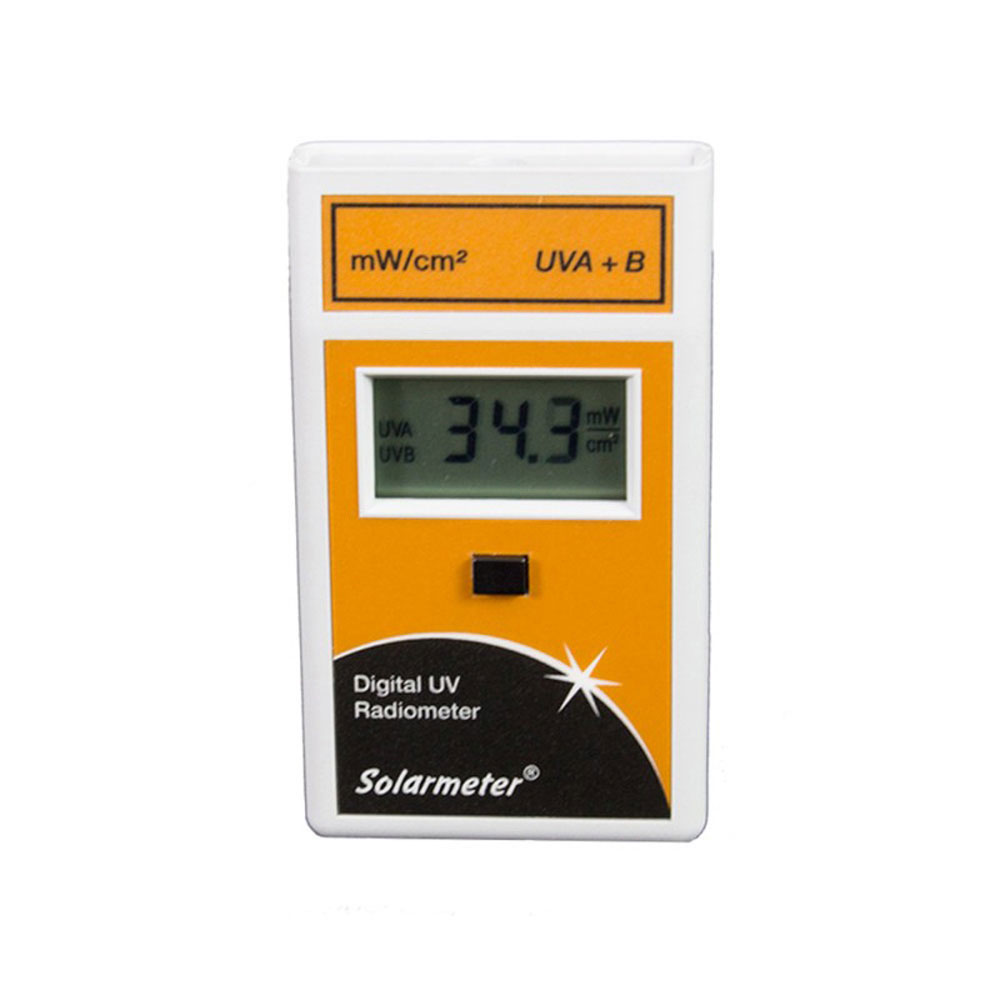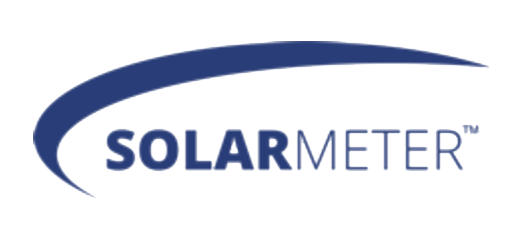• Monitoring UV Lamp Intensity and Aging
• Testing Acrylic Shield Transmission
• Monitoring PUVA Therapy Lamp Intensity and Aging
• Measuring Outdoor UV
Choose Standard Model 5.0 For Outdoor / High Intensity Applications
Choose Sensitive Model 5.7 For Indoor / Low Intensity Applications
| Model: | 5.0 |
| Irradiation Range: | 0-199.9 mW/cm2 Total UV |
| Response: | 280-400 nm (UVB bis UVA) |
| Resolution: | 0.1 mW/cm² |
| Conversion rate: | 3.0 Readings/Sec |
| Display: | 3.5 digit LCD |
| Digit Size: | 0.4 (in) / 10.2 (mm) high |
| Operational Temperature: | 32°F to100°F / 0°C to 37.8°C |
| Operational Humidity: | 5% – 80% |
| Accuracy: | ± 5% Ref. WRR |
| Dimensions: | 4.2L x 2.4W x 0.9D (in) / 106.7L x 61W x 22.9(D) (mm) |
| Weight: | 4.5 oz / 128 g (including battery) |
| Power Source: | 9-Volt DC Battery |
| Lens: | Acrylic |
| Diffusor: | Teflon |

Sensor/Detector:
The semiconductor UV sensor consists of a GaAsP photodiode chip and a UV filter which is completely insensitive to visible light longer than 400 nm and infrared radiation, since its spectral response covers only the UV region from 260 to 400 nm. Applications include solar UV detection (as the spectral response is well matched to the solar UV spectrum) and tanning lamps peaking near 365 nm (“new era” fluorescent and “high pressure” HID.)
Operation:
To operate your Solarmeter®, aim the sensor window located on the top panel of the meter directly at a UV source. Press and hold the push-button switch on the face of the meter. For best results take note of the distance the reading was taken from the UV source in order to ensure repeatable results.
Battery operation voltage is viable from 9V down to 6.5V. Below 6.5V, the numbers on the LCD display will begin to dim, indicating the need for battery replacement. Under typical service load, a standard 9V battery will last approximately 2 years.
Proper Usage of Solarmeter® Ultraviolet Radiometer:
• Wear tinted eye wear when checking intense light sources. (Glasses that offer all-round protection are ideal.)
• Allow lights to warm-up prior to taking readings (at least 15 min).
• When checking aging of lamps, keep measuring distance and locations constant.
• Lamps should be replaced when output drops 30% to about 70% of their original (new) readings. Take overall reading center of tanning bed bench pointing up with canopy closed, or check individual lamps at acrylic with canopy up. Keep track of hours vs. readings on a chart.
• If unsure of what original new values were, replace two adjacent lamps with new ones of the same kind and compare to old ones.
• This meter is primarily “seeing” the UVA “browning” rays. For erythemal rays use Model 7.0 MED/hr meter to relate to Te time.
• When checking acrylic transmission, take reading through acrylic; then remove acrylic and hold meter sensor at approximately the same distance from lamp as the acrylic shield was located.
Note: Model 6.0 UVB meter is better for this purpose.
• When using this meter to compare different types of lamps, due to their different spectral power distributions, the readings should be considered relative rather than absolute. Although higher output lamps of similar SPD’s will read higher than low output lamps, ones that peak near 365 nm (as does the meter response) will read higher than ones peaking near 350 nm even if the total UV output of both is the same.
Maintenance and care:
• Do not expose the meter to extreme temperatures, humidity, shocks or dust. If the meter is accidentally exposed to extreme humidity or damp conditions, unusually high readings may occur. Allowing the meter to dry naturally or placing it in a bag of silicate will restore normal function.
• Use a very soft cloth to clean the meter. Keep the sensor free of oil, dirt, etc.



